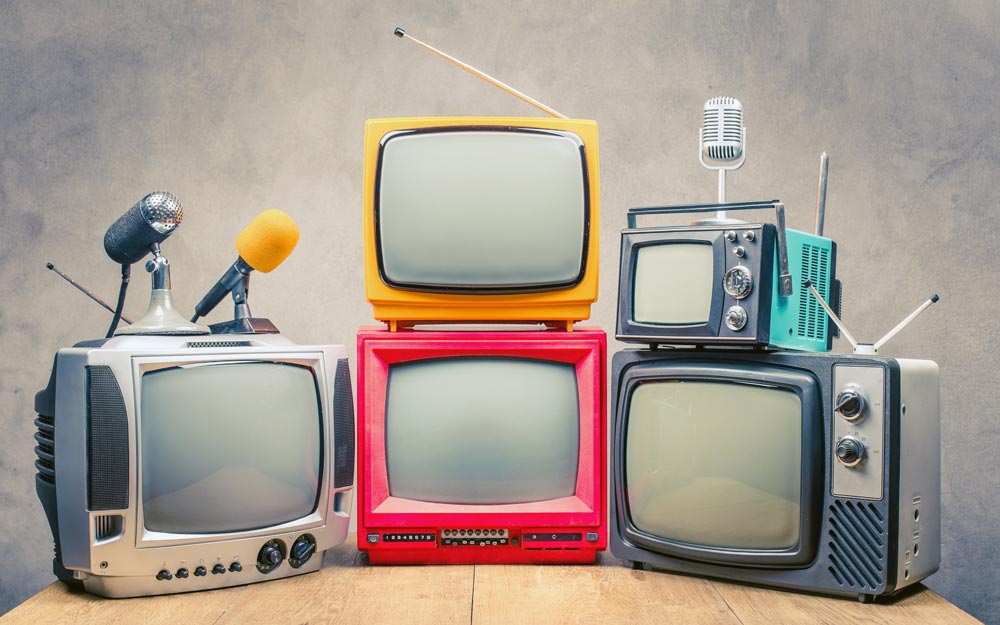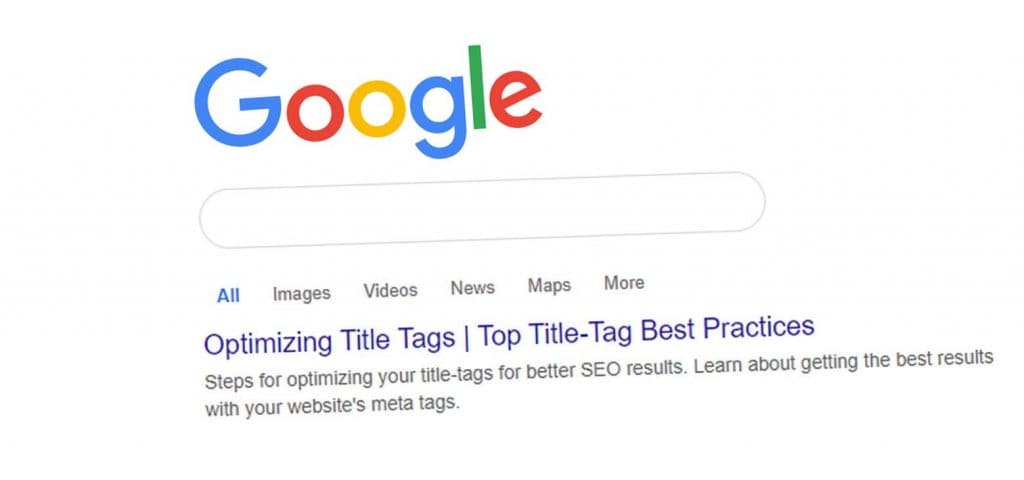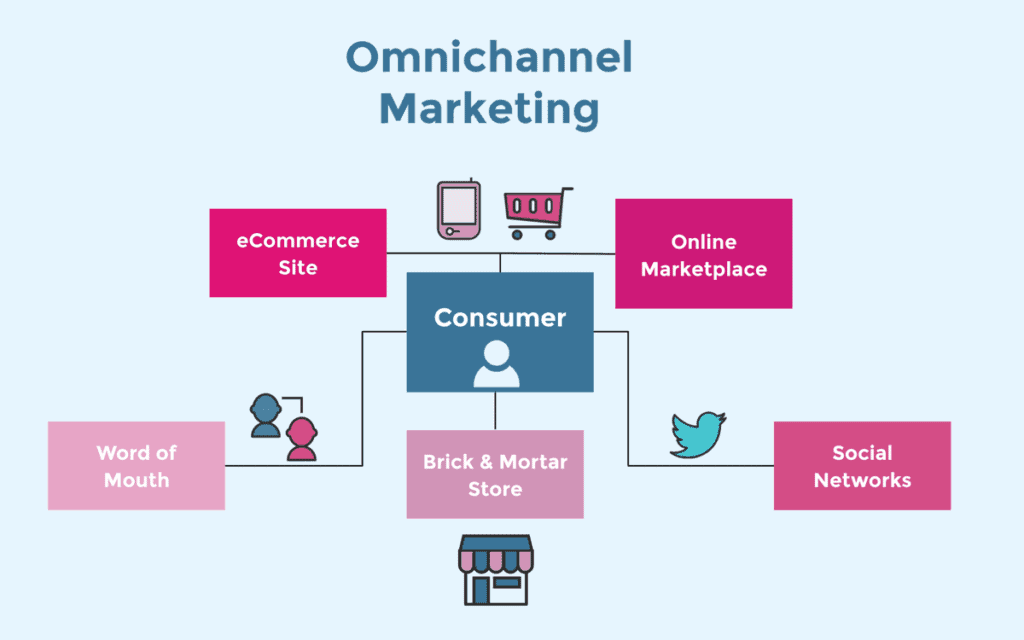Types of Advertising: Traditional vs Digital Strategies
Advertising is a critical component of most marketing campaigns and business growth strategies. With so many options, it can get overwhelming to determine the suitable advertising types and mediums to use. This guide covers the major categories and types of advertising to help you make informed decisions when developing your campaigns.
Table of Contents
Traditional Advertising

Before the digital age, brands relied heavily on traditional advertising mediums like print, radio, and television to spread brand awareness and promote products and services. While traditional advertising has declined recently, it remains essential in many multi-channel campaigns.
Print Advertising
Print ads appear in physically printed publications like newspapers, magazines, directories, and billboards. Some examples include:
- Newspaper ads – Appear alongside editorial content in daily or weekly newspapers. It is often localised.
- Magazine ads – Glossy, full-page ads with high production value in monthly niche publications.
- Directories – Category-specific annual publications for industries like the Yellow Pages.
- Billboards – Roadside posters mounted on large dedicated billboard signs. High impression numbers.
Though print circulation has decreased, print ads can still effectively reach specialised local or niche audiences. Full-page glossy magazine ads also offer a high visual impact.
Broadcast Advertising
Broadcast advertising transmits audio and video ads over radio and television mediums. This includes:
- Radio spots – Brief pre-recorded audio ads aired on AM, FM, or digital streaming radio stations.
- TV commercials – Short visual ads aired during commercial breaks of television programming.
- Local TV – In specific metro areas.
- National TV – Across the entire country on national networks.
- Infomercials – Long-form, typically direct-response TV ads presenting a product pitch.
Radio and TV ads can use sight, sound, voices, music, and emotion to capture attention and create an impact. Airing ads on popular high-viewership programs helps maximise impressions.
Out-of-Home Advertising

Out-of-home (OOH) advertising reaches consumers outside their homes through billboards, transit ads, and posters in various public venues. Some primary forms include:
- Billboards – Large format roadside posters mounted on dedicated structures or buildings.
- Highway billboards
- Digital billboards
- Transit advertising – Ads placed inside or on public transit vehicles and stations.
- Bus shelter ads
- Vehicle wrap advertising
- Airport advertising
- Street furniture – Ad space on public structures like phone booths, newsstands, benches, etc.
- Mall/airport ads – Posters and digital displays in high-traffic retail venues and travel hubs.
Out-of-home ads effectively blanket specific geographic locations with low-cost brand messages per impression. Creative visuals and strategic placement help these ads break through the clutter.
Digital Advertising
Digital advertising delivers highly targeted, measurable ads to audiences through internet-connected devices and platforms. It can take many forms, which we'll now explore in-depth:
Search Engine Marketing (SEM)

SEM refers to ads served through branded and unbranded searches across platforms like Google and Bing. The main SEM subtypes include:
1. Paid Search Advertising (PSA)
Also called pay-per-click (PPC) advertising, PSA displays brief text ads on search engine results pages (SERPs). The two primary types are:
- Google Ads – Text ads displayed at the top and bottom of Google searches. Marketers bid on keywords to target searches.
- Microsoft Ads – The Bing Ads equivalent of Google Ads. Appear alongside Bing search results.
Marketers only pay when searchers click these small but mighty text ads. Hyper-targeted customer intent makes PSA/PPC extremely effective at driving conversions.
2. Product Listing Ads (PLAs)
PLAs feature a product image, price, and title in SERP listings. They help searchers quickly identify and explore product offerings. PLAs notably appear on:
- Google Shopping
- Retail marketplaces like eBay
- Individual SERP listings
Shoppers can conveniently click PLAs to explore the full details and purchase options on the advertiser's website.
Display Advertising
Graphical display ads get served across thousands of websites, apps, and social networks to reach mass online audiences at scale. Subtypes include:
- Banner ads – Rectangular graphical ads of varying sizes (leaderboard, skyscraper, etc.) displayed on web pages.
- Interstitial ads – Full-screen image/video ads appearing before expected content loads.
- Pop-ups/under – Browser windows appearing above/below website content. It is highly noticeable but intrusive.
- Native advertising – Paid ads blended seamlessly into surrounding editorial/organic content.
- Social media ads – Targeted ads are shown on social platforms like Facebook and Instagram.
- Video ads – Brief video spots similar to TV commercials but online. Pre-roll, mid-roll, etc.
- Mobile ads – Ads explicitly tailored for mobile devices and apps. Full-screen interstitials, notifications, etc.
With infinite size, format, placement, and targeting options, display ads promote brands contextually across virtually every site a customer visits.
Classified Advertising
Classified platforms allow advertisers to list specific products, job openings, services, and other offerings in categorised listings for purchase/response by interested parties. Leading examples include:
- Online classifieds sites – Craigslist, Kijiji, eBay Classifieds
- Job boards – Indeed, ZipRecruiter, Monster
- Local services directories – Yelp
Hyper-targeted customer intent again makes classifieds extremely effective for generating leads and conversions. Nearly 50% of Craigslist visitors convert into customers.
Direct Mail Advertising

Direct mail advertising sends personalised promotions directly to target customers through postal mail. Common examples include:
- Sales brochures/leaflets
- Catalogues
- Discount coupons/vouchers
- Free trial offers
- Credit card/insurance offers
- Political flyers
Despite competition from digital ads, direct mail persists thanks to its tangible, personalised nature and universal reach. The most effective direct mail ads feature personalisation and valuable deals.
Grassroots Advertising
Grassroots advertising relies on unpaid influencers and brand evangelists to organically spread positive word-of-mouth messaging about your products and services. This includes:
- Viral content – Organic shares of funny video ads, engaging social posts, and entertaining branded web/mobile content.
- Influencer engagement – Promotions from bloggers, industry experts, and social media stars.
- Referral programs – Incentives encouraging existing customers to refer friends/family.
- Buzz marketing – Generating hype by giving exclusive previews/content to critical groups who will share it widely.
- Hashtag campaigns – Creating a branded hashtag for followers/customers to integrate into their organic sharing.
Properly nurtured grassroots efforts tap into the credibility of word-of-mouth and the reach/resonance of native sharing. Brands see the highest ROI by integrating grassroots with paid advertising to maximise exposure.
Ambient Advertising
Ambient advertising hits audiences in unusual but effective ways in unique everyday environments and situations. Examples include:
- Product integration – Placing brands/products into editorial content and entertainment properties like TV shows, movies, books, songs, and video games.
- Branded content – Creating entertainment, informational, or other content that entertains first while organically promoting the brand/product.
- Skywriting – using aeroplanes to write brief brand messages/symbols in the sky using unique smoke.
- Branded emoji – Custom illustrated emoji depicting branded products/services to drive shares.
- On-hold phone messaging – Short audio ad spots are heard when placed on hold during business phone calls.
- Branded flash mobs – Sudden choreographed dance routines starring regular people bringing a brand to life in public spaces.
- Augmented reality ads – Digital images/animations activated by cameras/apps and imposed onto real-world views.
Ambient efforts focus on driving awareness in unique ways that catch audiences off guard and generate shares/buzz.
Cross-Channel Advertising

In practice, the most effective advertising campaigns strategically combine different forms like search, social, display, TV, and more to influence customers across all phases of their buyer's journey through cross-channel advertising.
Critical examples of effective combinations include:
- Video + Display + Social – Video ads screened on YouTube, FB/Instagram, and millions of websites amplify reach and impact. Adding social further fuels sharing between peer groups for viral exposure.
- TV + Online + Radio – National TV commercials build broad awareness, while personalised digital ads re-engage viewers to convert, and radio spots reinforce messaging during commutes when audience attention is high.
- Search + Native + Social – Search ads place brands in front of motivated purchasers as native ads and influencer partnerships wordlessly influence customers across the web to drive consideration, and social recommendations provide peer validation towards conversions.
- Direct Mail + Email – Personalised postal offers drive response, while email sequencing delivers additional targeted promotions through different stages.
Layering complementary ad types makes campaigns exponentially more effective through increased reach, frequency, impact, and attribution across the complete sales funnel.
Performance Marketing
Performance marketing drives direct-response advertising optimised purely to “perform” against crucial conversion goals and generate attributable ROI through tactics like:
- Pay-per-call – Charging solely based on inbound call leads driven.
- Cost-per-lead (CPL) – Paying only when leads meeting pre-set criteria are generated.
- Cost-per-acquisition (CPA) / Pay-per-conversion – Similar to CPL/CPC but with conversions rather than mere leads.
- Sales-based commissions – Media sellers receive a commission percentage of the resulting revenue.
Performance marketing streamlines ad spending while crystallising marketing ROI by optimising specifically to drive calls, leads, or sales rather than mere impressions. Approximately 63% of marketers now leverage performance-based buying for most media.
Advertising Campaign Planning
Businesses must consider multiple factors when architecting an advertising program, including campaign objectives, audience insights, messaging strategies and media partnerships.
Defining Success Metrics and KPIs
Campaigns ladder up to overarching business goals related to brand awareness, consideration, sales and loyalty. Marketers choose specific performance indicators to gauge impact relative to spending and effort. Standard metrics include impressions, clicks, conversions, search rankings, web traffic, leads, sales revenue and ROI projections. Benchmarks establish reasonable expectations.
Segmenting and Selecting Target Audiences
Advertising works best when personalised to prioritise customer groups' mindsets, needs and interests. Analytics and market research uncover distinguishing user behaviours and characteristics. Based on these insights, advertisers narrowly define high-value segments and craft messages that match their preferences.
Tailoring Ad Creative and Messaging
Creative ads bring campaigns to life across channels. Marketers test content variations like images, headlines, captions, calls-to-action and layouts. Dynamic elements can rotate automatically to determine the best performance by segment. Message resonance stems from emotional appeal, information quality and format relevance.
Choosing Media Placements and Partners
The ideal media portfolio raises awareness among potential buyers while driving them to act. Advertisers leverage owned sites, external digital platforms, traditional channels, and influencer networks. Costs, transparency and analytics capabilities differ significantly. Agencies simplify complex media buying across outlets and markets.
Advertising Techniques and Strategies

Distinct techniques guide advertising creativity and delivery to increase appeal. Brands often combine multiple approaches to break through the monotony of excess commercialism.
Emotional Brand Storytelling
Storytelling makes rational offerings relatable through creativity and imagination. By framing functional features around character-driven narratives, ads spark interest and memory encoding. Emotional resonance arises from dramatisation, conflict resolution and calls to adventure.
Humour Appeal
Laughter disarms audiences, awarding brands personality and likeability. Ways to incorporate humour include satire, silly songs, funny animations and campy spokespeople. Comedy builds goodwill while conveying utility. Yet, not all jokes land with the intended demographic.
Celebrity Endorsements
Familiar faces transfer positive perceptions to products. Marketable stars come from sports, entertainment, business, politics and more. Yet picking the right spokesperson means matching celebrity image and values with brand positioning. Social causes often underpin socially conscious partnerships.
Giveaways, Contests and Rewards
Prizes prompt higher engagement even if the odds of winning are low. Contest participation often requires sharing personal data. Point-based rewards drive loyalty once users buy into the program. Gamification entertains brand interaction through levels, statuses, Easter eggs and redeemable credits.
Comparison Advertising
Juxtaposing product merits against competitors plants doubt. Comparative claims must withstand legal scrutiny through fairness and accuracy. But negatively attacking rivals risks diminishing hard-won trust. Thus, confident brands focus less on differences and more on customer enthusiasm.
| Technique | Description |
| Branded Entertainment | Integrating brands into novels, TV shows, movies, and video games |
| Virtue Messaging | Spotlighting social and environmental commitments |
| Patriotic Appeal | Aligning brands with national identity |
| FOMO Marketing | Driving urgency through limited-time scarcity |
Personalisation and Behavioural Targeting
Tailoring ads to individual tastes and tendencies boosts engagement. User sharing and tracking facilitate better recommendations aligned with intentions. But personalisation risks spooking customers with overly intimate pitches. Transparent policies help overcome privacy misgivings by detailing data practices.
While the ever-expanding list of options provides seemingly boundless possibilities, the keys to advertising success remain to employ research, planning, A/B testing, measurement, optimisation, and developing comprehensive strategies tailored to your goals, audiences, and resources. Rather than choosing avenues based on assumptions or bias, allow data and performance calibration to guide your growth path.
Conclusion
Modern advertisers enjoy endless possibilities spanning traditional print, broadcast, out-of-home, digital, grassroots, ambient, performance, and cross-channel advertising mediums. While variety brings complexity, the diversity of options lets brands micro-target messages and touch customers across multiple settings.
Carefully researching options against business objectives, seamlessly integrating complementary formats, and perpetually optimising performance based on ROI analytics now separates effective advertisers from the rest. Rather than spreading efforts randomly, strategically converge your messages across the ideal channels where your audiences will likely engage, convert, and amplify them further.
Frequently Asked Questions
What types of advertising are most popular today?
Internet-based advertising has become dominant in recent years. This includes paid search, social media, display ads, video, and mobile formats. That said, geo-targeted online ads often integrate with traditional mediums like TV and radio for combined impact.
What is the most effective type of advertising?
It depends entirely on your specific goals, offerings, target audiences and campaign strategy. Performance marketing that optimises ads to drive attributable conversions/sales works exceptionally well for many direct-response advertisers. Creative TV and video ads often prove most memorable for branding and awareness.
What mediums are best to reach Baby Boomers?
Television and direct mail remain quite effective for targeting Baby Boomers. Integrating social media ads also helps progressively connect with younger Boomers migrating onto platforms like Facebook and Instagram.
How do you choose locations for billboards and outdoor ads?
Traffic counts, commuter patterns, proximity to landmarks, zoning, and local ordinances dictate ideal locations. Conducting ethnographic research via interviews and focus groups will reveal which areas your target audiences most heavily frequent.
How has digital advertising evolved in recent years?
Digital advertising has shifted increasingly to automated, data-driven programmatic buying optimised by machine learning. Advertisers use advanced data application strategies to micro-target personalised messages across platforms and devices.
